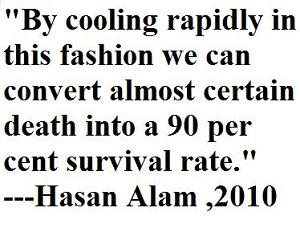Delaying Death? Suspended Animation Trials To Begin This Month
Ryan Martin / 11 years ago
![]()
Suspended Animation may seem like something found only in Sci-Fi and futuristic movies but the concept is about to get a lot more real than people might have thought. In the USA the FDA (Food and Drug Administration) have approved a small study which permits surgeons at UPMC Presbyterian Hospital in Pittsburgh to try and suspend human life during trauma-related surgery. The technique, Emergency Preservation and Resuscitation (EPR), is a far cry from the suspended animation we’re used to seeing in Hollywood films where people are literally frozen solid. In reality the technique involves reducing the body temperature to 10 degrees celsius, 50 degrees fahrenheit, by flushing the body with cold saline. This slows the blood flow to prevent bleeding out from traumatic injuries, it can also slow other biological processes which may increase likelihood of death after a traumatic injury. EPR puts the patient in an effective state of hypothermia which can only be sustained for around 2 hours. The EPR technique is expected to raise the survival rate among trauma patients from injuries like cardiac arrest from its current level of 7%.

The EPR technique is based on a whole swath of medical research about suspended animation techniques. A study published in 2006 by Alam et al demonstrated that compared to a “control” population of pigs the use of EPR increased the survival rate from 0% to 90%. In practice the improvements among humans in real-life situations may not be so dramatic but the technique does buy time for surgeons operating on trauma patients, potentially up to 2 hours, which could result in emergency surgery saving more lives than ever before. Results of EPR use will be compared to non-EPR use in real-world situations to determine whether the technique has any viable future in medicine. An official website for the pilot undertaking, with an opt-out option, has been set up.
Source: Acute Care Research, Via: IFL Science
Image #1 from Avatar (2009 film by 20th Century Fox).
Image #2 courtesy of Singularity Hub



















